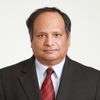The landslide victory of Dr. Yukio Hatoyama's Democratic Party of Japan (DPJ) has given a once-in-a-lifetime opportunity to effect change. Dr. Hatoyama will become the Japanese Prime Minister this month. The overwhelming electoral success comes at a time when the Japanese people have grown weary of the political and bureaucratic dithering that characterized much of the past 20 years. Even today, Japan remains the world's second-largest economy - larger than Germany and Britain. However, starting in 1989, a gradual economic decline has led many in Japan to question the future. But, just next door, China and India have been growing rapidly, albeit with transient slowdowns, in addition to other Asian nations such as South Korea and Vietnam. Asia's share of the world's GDP will be over 40% in another decade, and already, 50% of Japan's trade is with Asia as compared to 20% with the US. Further, Japan has been a beacon for quality engineering of consumer-friendly high technology. It brings a smile to see octogenarians play back .mpg files on their pocket cameras of musical recitals at the most exquisite Japanese Buddhist temples - and those occasions remind of the sometimes-forgotten but unbreakable links with India and China going back to the sixth century. Further, today, Japan is a leading innovator in the green economy, on quality food and nutrition and the bio-sciences. India's software and China's hardware are poised to provide the fillip to the remarkable possibilities. Through extensive links that already exist with Asia, Prime Minister Dr. Hatoyama's new government can unleash the great potential for broader Japan-Asia cooperation that he has already highlighted when he called for a more unified market and currency in Dr. Hatoyama's article in the Huffington Post.
Innovative structures in Asia need to be created to build on that vision. Merely linking bureaucracies as was done in the past, in multilateral or bilateral bureaucrats-only structures, is so passé and indeed that is precisely what Dr. Hatoyama repeatedly condemned in every one of his hundreds of campaign stops as he traversed the nation by train, van, car, and plane while campaigning for the 300 single-seat and 180 proportional representation constituencies that went to the polls on August 30.
Dr. Hatoyama emphasized new modalities and a new beginning. In the just-dumped era, an "iron triangle" had ensnared the bureaucracy, industry and politicians, and nothing entrepreneurial was possible.
As an example, I had suggested an innovative way for Japan to move actively as an investor nation in Asia as demographic realities may necessitate so that Japanese debt-outstanding with Asia, such as the $24 billion external debt outstanding with India, can be converted into more productive equity investments in Asian enterprise and innovation. Indeed this is continuation of work that I led as Project Director and Research Faculty at Harvard University (see here and here), including initiating, facilitating and organizing the world's first debt-for-health research swap with a former Japanese Foreign Minister, Dr. Saburo Okita, who served in the cabinet of Prime Minister Mr. Masayoshi Ohira. Dr. Okita had been a young economist in the era of Mr. Ichiro Hatoyama, then-Prime Minister and Dr. Hatoyama's grandfather. Mr. Ichiro Hatoyama had been falsely accused by certain Machiavellian elements in the then political establishment and had been purged the day he was to take up the position of the first elected post-war Prime Minister in 1946. It took almost 9 years for the error to be rectified, and Mr. Ichiro Hatoyama later served thrice as Japanese Prime Minister. Indeed, closer ties with Asia are what Mr. Ichiro Hatoyama had himself proposed five decades ago. Also, related to this, Stanford University and its endowment have benefitted tremendously from the conversion of obligations into equity. Dr. Hatoyama did his doctorate from Stanford in engineering management. Google founders Sergey Brin and Larry Page used the computer labs of Stanford when they were graduate students there and Stanford wisely took equity in Google rather than cash payments from the budding entrepreneurs so as to realize profits in the hundreds of millions of dollars later that now go to providing scholarships at Stanford. I was privileged to be a plenary speaker at Stanford University's International Health Conference.
Beyond its manifesto, DPJ could also look at emphasizing prevention of chronic diseases like cardiovascular, metabolic syndrome/diabetes, cancers and chronic respiratory diseases to prevent or delay their onset thus saving many billions of dollars-equivalent in yen. In the US the expensive long-term treatment of chronic diseases is the cause of 60% of US personal bankruptcies. Just two cardiac procedures, angioplasty & stents and coronary bypass operations, are costing $100 billion every year. Thus, emphasizing prevention programs would be refreshing, when in the past 95 cents of every dollar in health care costs had gone for treating disease after it had already occurred.
Fierce resistance is predicted by some who are so ingrained in the status-quo. But, most of us have hope that with this new beginning, a new upward era may well have come for Japan.
